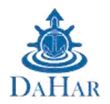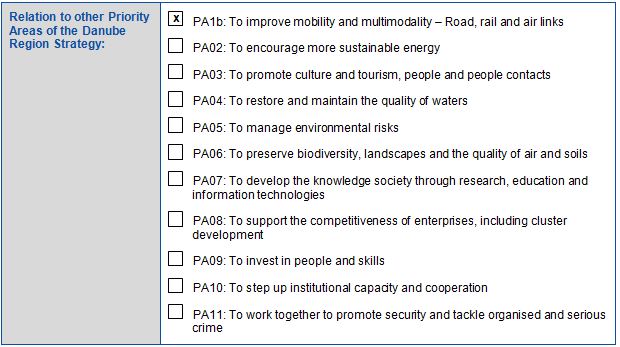BASIC PROJECT DATA
Project ID: PA1A059
NEED AND ADDED VALUE FOR THE DANUBE REGION STRATEGY
The economic development of small and medium-sized Danube cities with ports of international importance and their participation in the economic circulation should be enhanced through the optimal utilisation of port development in the frame of enhancing waterway cargo transport on the Danube in a transnational context. The project paved the way for inland harbours of such cities to develop themselves in a coordinated, sustainable way with respect to their urban environment by utilising the logistical and multi-modal development capacities of their ports and port areas and by developing their ports in a harmonised manner. This way, small and medium sized cities and ports will find their position in the development of waterway cargo transport, which results in the specification and diversification of their logistical and multi-modal functions in a logistical network of Danube cities and ports. Stimulating cargo transport via inland waterways is one of the strategic EU aims on sustainable transport.
OBJECTIVE(S) OF THE PROJECT
The overall aim of DaHar was to support the integration of inland navigation within the transport logistics chain by investigating and using the multimodality potentials of ports and port areas in middle-sized South-East European port cities along the Danube. As a result of the project, partner cities and their ports became more prepared to play a pivotal role in “priority networks” envisaged by the Green Paper on TEN-T (COM 2009)44.
CONDUCTED PROJECT ACTIVITIES
The main project activities included:
- a careful analysis of multi-modal cargo transport development,
- an intensive exchange of other partners’ expertise in formulating the development potentials of individual ports,
- development and testing of RIS pilot projects, including DaHar RIS TLS
- synthesising the accumulated knowledge with stakeholder participation,
- drawing up an integrated strategy for the functional specialisation of ports in the logistic chain,
- developing concrete action plans for individual ports based on the common strategy
This strategy building was supported by a (pro)active consensus building process to ensure the appropriate uptake of stakeholder inputs in the delivery of project outcomes.
TRANSBOUNDARY IMPACT
The project results help improve policies related to logistics and multi-modal ports development and have an important contribution to the functional specialization of ports of small and medium-sized cities in the transport logistical chain, thus filling the gap between the functions and roles of these cities and those of large multimodal hubs.
The joint work in the frame of DaHar resulted in the elaboration of an integrated strategy defining functional specialization in the transport logistical chain. The development of such a strategy involved the relevant partners and stakeholders from policy-making, the industry and also research, aiming at finding agreed solutions to common challenges and opportunities, providing a governance mechanism for a common strategic approach, as well as for the implementation of concrete future actions and projects.
As a result of the project, the DaHar policy recommendations prepared were included in the Serbian Strategy of transport development from 2015 to 2025.
PROJECT BENEFICIARIES / TARGET GROUPS
Direct target groups were actors that have a direct stake in the logistics development of ports, namely first-hand decision-makers in charge of port development (port authorities or (waterway) transport authorities or municipalities), port owners and port operators.
Indirect target groups included actors that would benefit from and contribute to the operation and services of ports and logistical centres, namely freight forwarders, shippers, shipping companies, operators of other transport modes, transport enterprises using transport services and representatives of industries. Logistic institutions, knowledge institutions and networks also belonged here as they are key players in promoting the widespread use of good practices.
STATUS AND TIMEFRAME
Start date: 04/2011
End date: 03/2014
The project is already concluded.
FINANCING
Total budget: 1,966,100 EUR
EU funds: 1,441,430 EUR (European Regional Development Fund)
229,755 EUR (Instrument for Pre-Accession Assistance)
funded by South East Europe Transnational Cooperation Programme (SEE) 2007 – 2013
National funds: amount unknown
Private funds: amount unknown
PROJECT TEAM
Project leader: Municipality of Dunaújváros / Hungary (website: www.dunaujvaros.hu)
Address: Városház tér 1, 2400 Dunaújváros / Hungary
Project partner(s):
- National Company Administration of Danube River Ports J.S.Co. / Romania
- Municipality of Galati / Romania
- Maritime Danube Ports Administration / Romania
- Ennshafen OÖ GmbH / Austria
- Bulgarian Maritime Administration / Bulgaria
- Bay Zoltán Foundation for Applied Research, Institute of Logistics and Production Systems / Hungary
- Public Ports Plc. / Slovakia
- Municipality of Silistra / Bulgaria
- University of Novi Sad, Faculty of Technical Sciences / Serbia
- Port of Novi Sad / Serbia
PROJECT ENVIRONMENT
STRATEGIC REFERENCE
- The Basel Convention
- The Recommendations of the Danube Commission
- The Danube Navigation regulation
- The Lisbon strategy
- The Romanian Strategy for Sustainable Transport 2007-2013 and 2020, 2030
- The Romanian Sectoral Operational Programme- Transport (SOP-T 2007-2013)
RELEVANT LEGISLATION
- Council Regulation (EC) No. 1083/2006 of 11 July 2006 laying down general provisions on the European Regional Development Fund and the Cohesion Fund and repealing Regulation (EC) No. 1260/1999
- Regulation (EC)No.1080/2006 of the European Parliament and of the Council of 5 July 2006 on the European Regional Development Fund and repealing Regulation(EC)No.1783/1999
- Commission Regulation (EC) No. 1828/2006 of 8 December 2006 setting out rules for the implementation of Council Regulation (EC) No.1083/2006 laying down general provision on the European Regional Development Fund, the European Social Fund and Cohesion Fund and of Regulation(EC) Nr.1080/2006 of the European Parliament and of the Council on the European Regional Development Fund
- The South East Europe Transnational Cooperation Programme, approved by the European Commission on 20 December 2007, Decision No. C)2007)6590
- Community rules regarding Community horizontal policies such as the rules for competition and entry into the markets, the protection of the environment, the equal opportunities between men and woman and public procurement
- National rules applicable to the Lead Partner and its Project Partners
EUSDR EMBEDDING
EUSDR COMPLIANCE
OTHER RELEVANT ISSUES
Inland harbours of small and medium–sized cities along the Danube could become key economic players via:
- Careful investigation of their multimodal potentials to play an active role in the logistical chain
- Harmonization of economic and cargo transport activities through diversification and specification of their logistical function
- A transnational consensus by key stakeholders on inter-modal port development
Critical issues:
- Strengthening the commercial potentials of the Danube as a sustainable boundless transport axis (VII Pan-European corridor) is crucial to ease the burden on transportation networks, which is currently monopolised by road transport. Heavily fragmented infrastructure, weak transnational connections and intra-regional disparities regarding secondary networks are major obstacles to development.
- Channelling inland navigation into the transport network warrants a harmonized approach. While the ports of most of the larger cities have been upgraded considerably over the last decades, the economic and logistical potentials of ports of small and medium sized cities, especially along the Lower Danube, are not optimally used.
META DATA
Data provided by: Gabriela Pamfil (Maritime Danube Ports Administration SA Galati, Romania) – 10.10.2011
Last update by: László Rédli (Municipality of Dunaújváros, Hungary) – 16.06.2014
Download pdf




